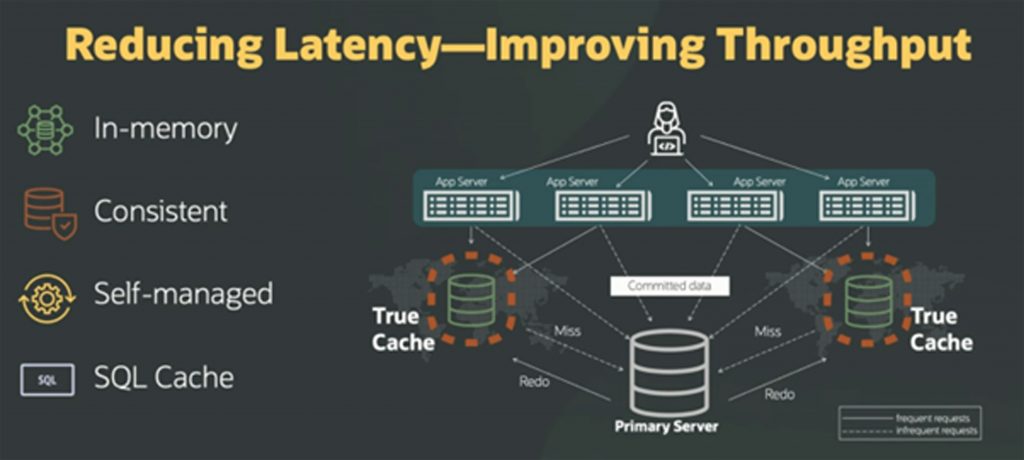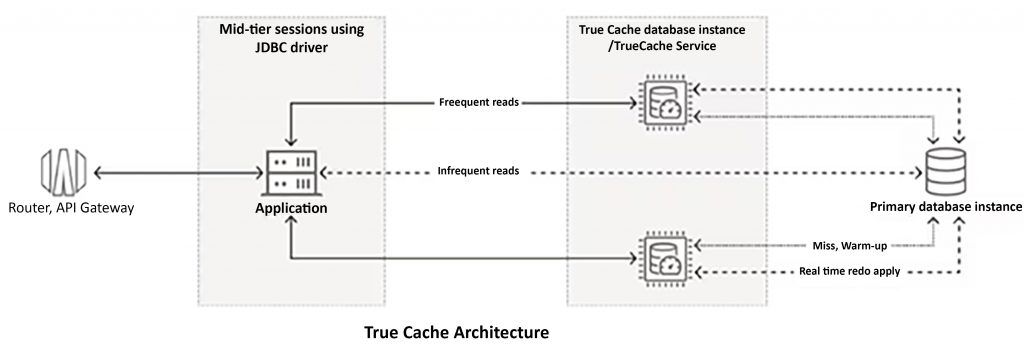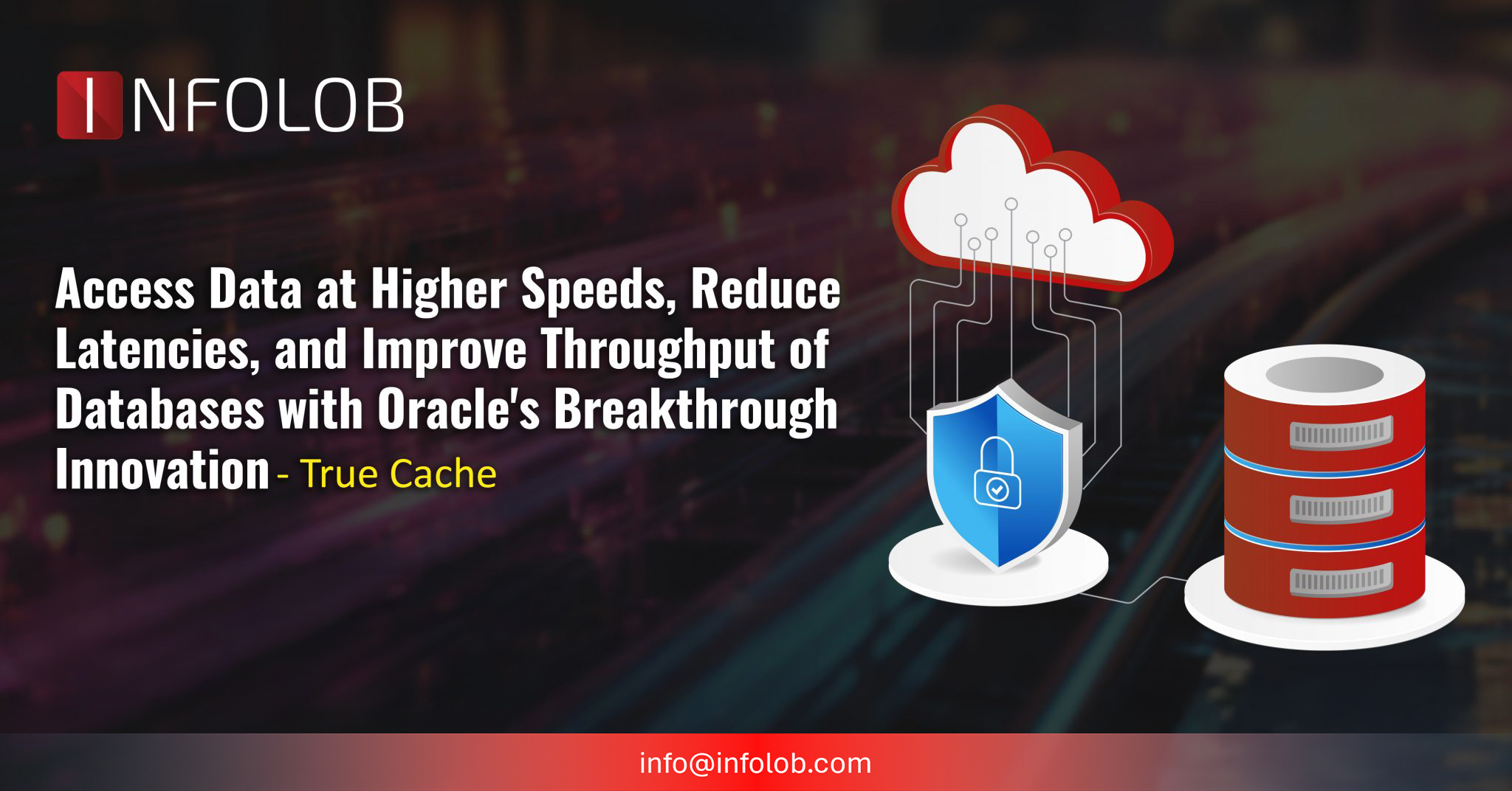Speed is always a giant requirement for every organization and thanks to the supercomputers with powerful GPUs that carry mission-critical workloads at scale without any latencies. Although, latencies have seemed to be the new outage for customers. Hence, the need for designing new application architectures to meet the surgical demands of users have grown vividly. Here two things matter most – one is optimal service performance and the second is high response time.
On meeting scalable performance, Caching becomes a common ground solution when considering the businesses performing more reads than writes. The huge role of Caching comes in databases where they store the frequently accessed data in a temporary location, resulting in reduced reliance and more efficient data retrieval.
Whether the enterprises want to manage the data or dive through apps, the faster is better – ultimately driving efficiency. As the smart ways to access and processing data at faster rates unfold so are the things move quicker and become smoother. And in this blog, we will deconstruct on the breakthrough innovation from Oracle – True Cache in Oracle Databases.
The purpose of this article from one of our Digital Transformation Services Experts is:
- Understanding of why Oracle True Cache is needed for databases
- Uncover benefits for enterprises when Oracle True Cache is in action
- Working phenomenon
- Use cases and application usage
Overview of Oracle True Cache
Oracle True Cache is an in-memory SQL cache that is consistent and managed automatically by Oracle Database 23ai. It integrates smoothly with your database environment, efficiently storing frequently accessed information and significantly improving application response times. Oracle True Cache minimizes burden on the database server by handling recurrent data requests. Its automatic management and continuous consistency make application development more cost-effective and easier for developers.
Modern applications frequently require many connections and quick, low-latency data access. A frequent solution is to deploy caches in front of the database because applications normally execute far more reads than updates, and they can read from the cache without harming database performance. For example, an airline reservation system reads data often when users search for flights, and it’s fine if the data isn’t up to date compared to what’s in the database. When a flight is booked, the program just requires the most recent data.

Benefits of Oracle True Cache
Oracle True Cache offers a variety of business benefits relating to application development and performance.
- Increases scalability and performance by offloading queries off the primary database.
- Reduces application response time and network latency by putting True Cache closer to the app. This is particularly beneficial for situations where a database is in a different region than the application due to data residency constraints.
- Divides data across many True Caches to create a significant amount of in-memory storage. The overall size of cached data across all True Caches may be far larger than that of a single primary database or cache.
- Automatically updates the cache contents.
- Transparency with the application simplifies development and maintenance.
- True Cache includes the option to pin certain tables and data sets to the cache. This ensures that critical data is preserved even under memory limits or least recently used (LRU) methods. Pinned data is automatically refreshed in real time as changes occur in the core database, ensuring consistency and reliability.
- True Cache redefines cache management with exceptional performance, taking advantage of multi-threading and utilizing all cores/vCPUs on the host. It provides native high availability, ensuring data resilience and continued availability even during node failures or network disruptions.
- True Cache permits data to be stored on disk if it does not fit in the True Cache compute instance memory. This permits the cache to contain more data than can be stored in the compute instance’s memory, increasing the total cache capacity.
How does Oracle True Cache work?
Oracle True Cache serves queries making use of data from its buffer cache. True Cache, like Oracle Active Data Guard, is a totally operational read-only replication of the primary database, however it is practically diskless.
- An application decides whether to query data from True Cache or the primary database.
- True Cache is empty when it initially starts up, therefore it reads massive amounts of data to fill the cache. Whenever a block is cached, it is automatically updated by redo apply from the parent database. This is identical to the update approach applied by Oracle Active Data Guard.
- True Cache responds to queries by using data stored in its memory. When the data is not in the cache, True Cache retrieves it from the primary database.
- True Cache delivers only committed data, which is always consistent.
- Whenever there are several True Caches serving the same database application service, the listener will automatically distribute and load balance sessions to each cache.

Considerations for Using True Cache
Consider these points when deciding whether to use Oracle True Cache.
- You must configure enough memory for True Cache so that your most often visited data remains in memory.
- True Cache requires only a minimal amount of storage for the standby redo log files. Automatically generated configuration files include control files, the SPFILE, and temporary data files.
- True Cache is a read-only cache, therefore it cannot be updated directly. However, DML redirection can be used to update the cache indirectly.
Application Usage Approaches
Applications can make use of True Cache in two ways.
- The program has two physical connections, one to the primary database and one to True Cache. Each connection has a database application service, and the application determines which connection to utilize based on whether it is reading or writing. This model can be used with any existing client driver and programming language.
- The application has a single logical connection to the primary database, which is handled by the database application service. The JDBC Thin driver (beginning with Oracle Database 23ai) maintains physical connections to the primary database and True Cache. This model only supports Java applications.
Scenarios of True Cache
- Data sovereignty: Reads to instances are deployed at the end user or sovereign regions as Oracle True Cache offloads them, boosting up analytics response times and continuing the data sovereignty.
- Real-time analytics: It can cache the data and offload database I/O to lower maintaining the operational processes and costs, thereby leveraging the performance of database and the application.
- Generative AI: RAG and LLM caching can help to streamline the AI development process.
- Edge computing: Oracle True Cache can be implemented in areas closer to users or devices, shortening the time required to gather, store, and retrieve data from databases.
- Ecommerce applications: Customers get data for online product catalogs by using Oracle True Cache rather than the back-end database. This strategy reduces response times and enhances the consumer experience during high sales periods like Black Friday, Cyber Monday, and prime-time television events.
- User authentication: Oracle True Cache manages millions of daily updates to user profiles, validating the application user in real time. It also supports several data models, allowing for the native storage of various sorts of information while minimizing complexity and expenses.
- Online Gaming: Oracle True Cache decreases latency and enhances the immersive gaming experience by storing real-time player data, allowing for features like leader boards and user rankings.
Oracle True Cache provides a comprehensive solution for the new data landscape. True Cache makes full use of the Oracle Database’s advanced features, such as indices, parallel queries, and compression; support for various data types, such as relational, object, JSON documents, key-value, text, graph, and spatial; and support for various data formats (row/column). It removes the complexities of managing a separate caching layer and invalidations.
In the IT world where speed is preference, Cache is a lifesaver. And as the innovations like True Cache uprise from Oracle, the database performance will touch the abundance. Through this, the enterprises will have the advantage of faster, more reliable, and efficient data access. And, if you’re looking to elevate your database, Oracle True Cache is the mighty weapon.
For all queries, please write to:





